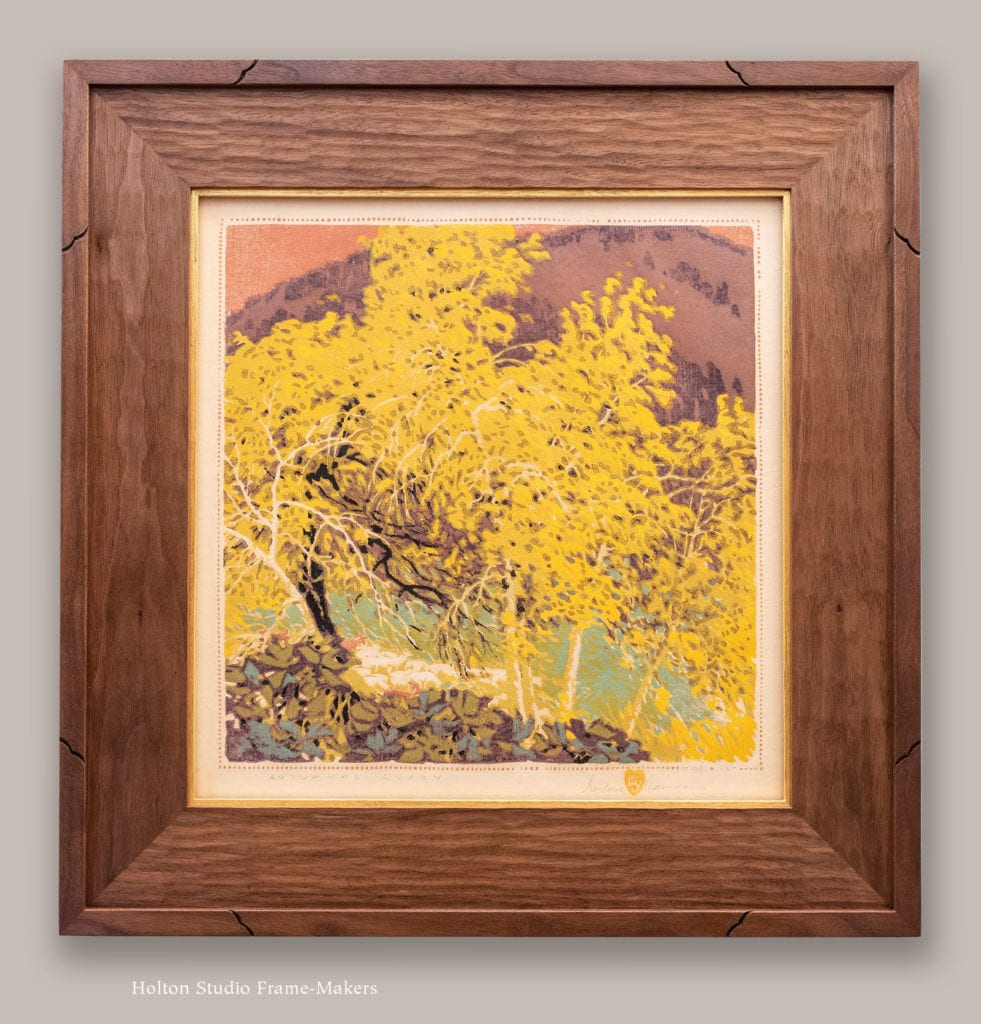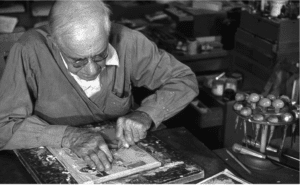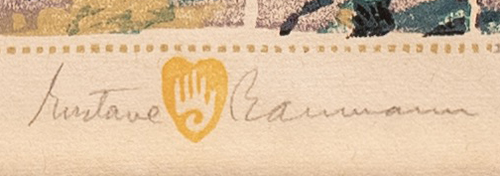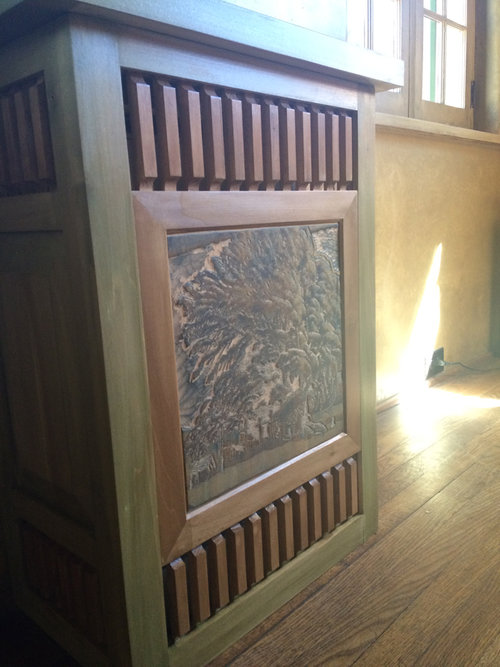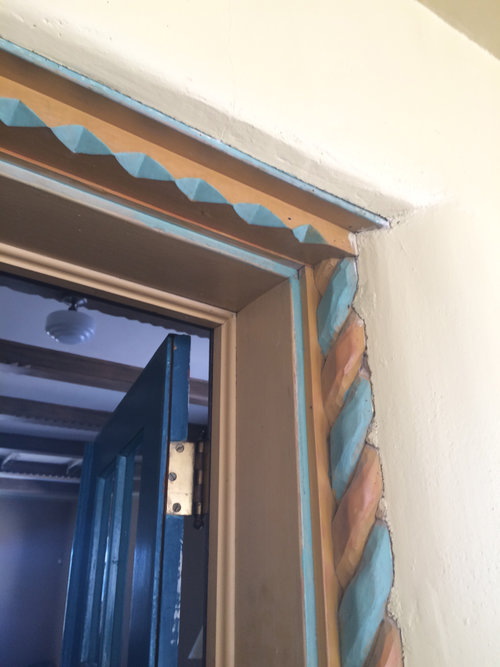Over the years we’ve framed some tremendous works by Gustave Baumann (1881 – 1971), one of America’s most significant twentieth century woodblock artists.
These two prints, “Autumnal Glory” and “Aspen Money,” both about 13″ x 13″ image size, were just picked up by the customer this week. The works are meant to hang side-by-side, so the frames are nearly identical but with slightly different carved patterns to accent the corners. They’re both walnut with Nut Brown stain, and each has a 2-1/2″ wide flat, all carved, with a 5/8″ flat cap molding. A 1/8″ gilt slip adorns the sight edge.
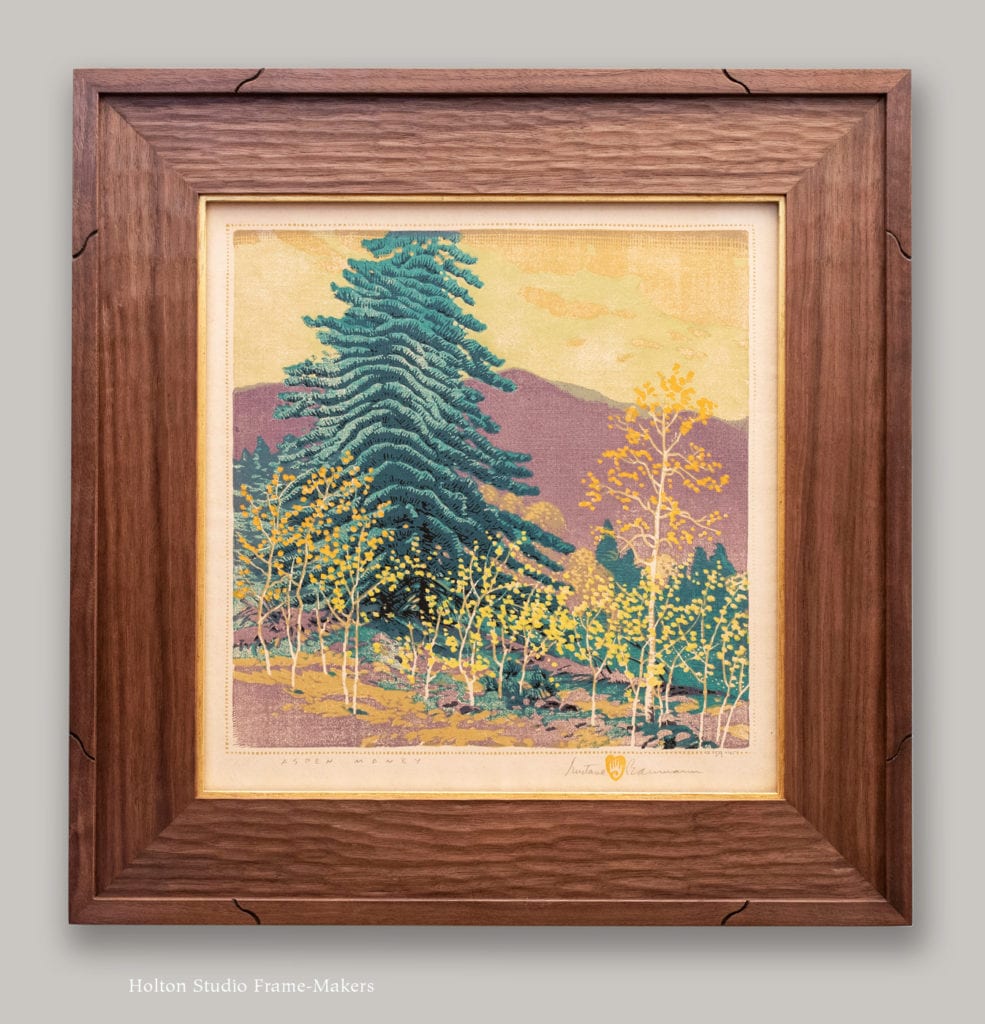 As I discussed in my last post, in regards to framing Japanese woodblock prints, among the several ways in which there is a natural harmony achievable between block prints and their frames is the harmony of craft—the shared materials and methods of the two arts. The carving on a wooden frame naturally resonates with the print as a design produced by a carving on a woodblock.
As I discussed in my last post, in regards to framing Japanese woodblock prints, among the several ways in which there is a natural harmony achievable between block prints and their frames is the harmony of craft—the shared materials and methods of the two arts. The carving on a wooden frame naturally resonates with the print as a design produced by a carving on a woodblock.
Writ large, it’s the harmony and unity of a picture and its architectural setting—the most immediate architecture in which a picture is set being the frame. The photograph below of a detail of Baumann’s own home in Santa Fe takes this idea a step further, but the carving is very close to what a print block looks like. Note also the unity of pictorial art and architecture achieved in the way that the carving is framed close, as the prints I’m showing are, even though Baumann’s prints are typically seen in a conventional matted presentation. (Even Baumann himself seems to have preferred that approach.)
Another detail from Baumann’s home is a hand carved frame—one around his door, shown below. It’s a truly welcoming touch.
William Morris said, “my home is where I meet people with whom I sympathize, whom I love.” By all evidence, Baumann might have said the same thing about his own family’s house. Whether he was expressing his affection for the landscape or his home, Baumann’s work in the world was beautifully expressed by the seal found on most of his work: a hand inside a heart.
« Back to Blog
